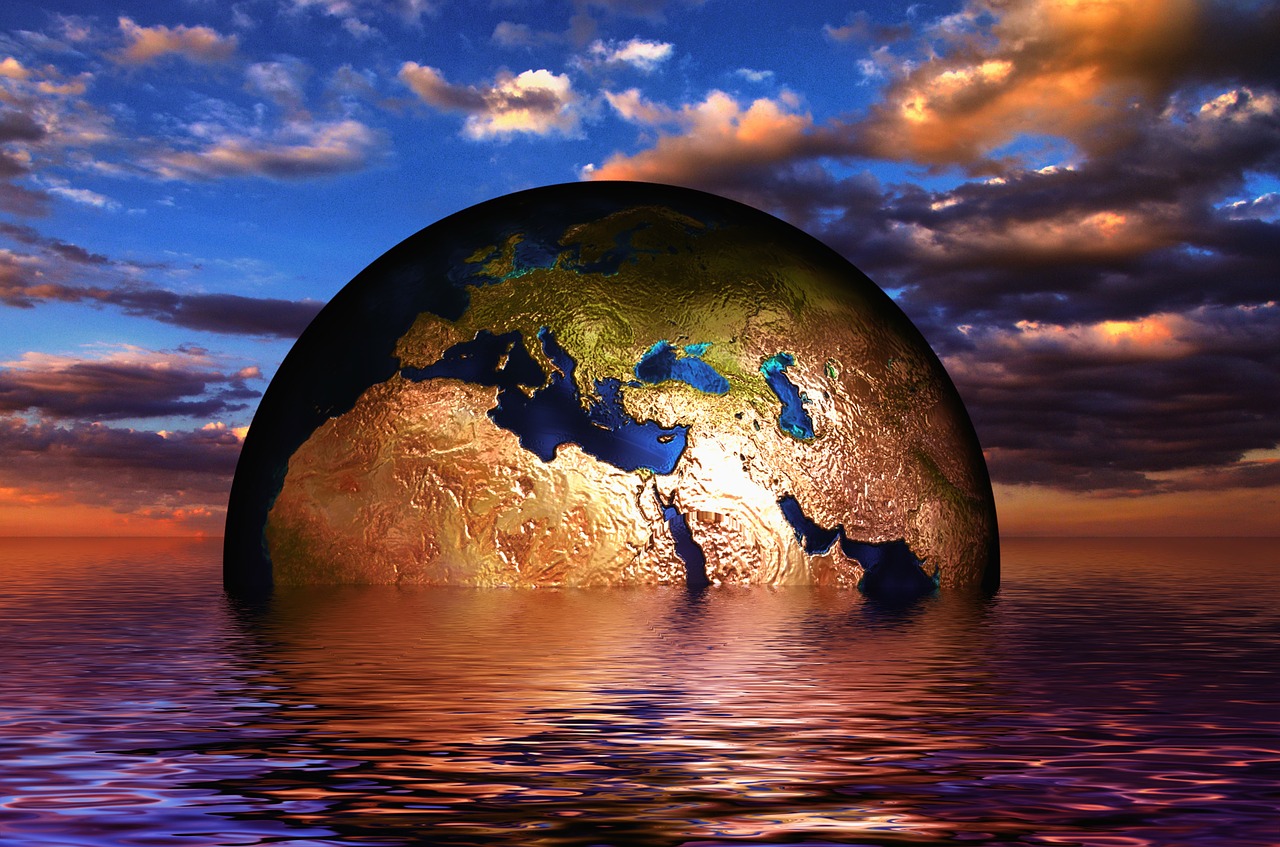

Climate scientists have much to tell us about the quantity of greenhouse gases being emitted annually, and how it has affected global temperature. As our previous instalment discussed, they can say with high certainty when temperatures will reach the +1.5°C and +2°C thresholds relative to the preindustrial era if emissions continue at current levels. And they can assure us that once emissions drop to net zero, the global temperature will stabilise near its level at that point.
A far more difficult question is, what will happen to the climate if average global temperatures rise by +1.5°C or +2°C or more? The Intergovernmental Panel on Climate Change (IPCC) has periodically published reports reviewing the climate change literature since 1990. The 2018 IPCC Special Report on Global Warming of 1.5°C extensively discusses possible climate impacts as temperatures rise. It is full of sentences such as:
This article is only available to Macro Hive subscribers. Sign-up to receive world-class macro analysis with a daily curated newsletter, podcast, original content from award-winning researchers, cross market strategy, equity insights, trade ideas, crypto flow frameworks, academic paper summaries, explanation and analysis of market-moving events, community investor chat room, and more.
Summary
- Scientists can confidently project how rising emissions will affect global temperatures in coming decades unless curbed.
- But they are frustratingly vague when quantifying how higher temperatures will affect the future climate.
- Much analysis basically says current trends will worsen if temperatures continue to rise.
- With business and governmental decision making increasingly data driven, this ambiguity largely helps explain why society collectively lacks meaningful urgency to address climate change – although there is no lack of talk about the need for action.
Market Implications
- Investors should expect business as usual for the foreseeable future.
- At some point, business and governments may face major rising costs and disruption due to a need to fight climate change. But for now, incremental steps are the order of the day.
Climate scientists have much to tell us about the quantity of greenhouse gases being emitted annually, and how it has affected global temperature. As our previous instalment discussed, they can say with high certainty when temperatures will reach the +1.5°C and +2°C thresholds relative to the preindustrial era if emissions continue at current levels. And they can assure us that once emissions drop to net zero, the global temperature will stabilise near its level at that point.
A far more difficult question is, what will happen to the climate if average global temperatures rise by +1.5°C or +2°C or more? The Intergovernmental Panel on Climate Change (IPCC) has periodically published reports reviewing the climate change literature since 1990. The 2018 IPCC Special Report on Global Warming of 1.5°C extensively discusses possible climate impacts as temperatures rise. It is full of sentences such as:
The projected frequency and magnitude of floods and droughts in some regions are smaller under 1.5°C than under 2°C of warming (p. 179).
Global warming of 2°C is expected to pose greater risks to urban areas than global warming of 1.5°C (p. 180).
Risks to natural and human systems are expected to be lower at 1.5°C that at 2°C of global warming (p. 178).
Many Possibilities, But Little Hard Data
For all the hundreds of pages of detailed discussion in the report, there is a frustrating lack of hard quantitative information.
The report reviews potential adverse impacts on sea level, biomes on land and in the sea, river deltas; and risks of flooding on coastal areas and South Asian cities, loss of polar cap ice, and more severe storms, much of it couched in hypothetical or conditional language. The report predicts more hot days and nights and fewer cool ones. There will likely be less snow cover. Land areas will warm more than the average global temperature, which combines surface air and sea temperatures (p. 191). That implies oceans could continue to warm for centuries until they reach equilibrium with air temperatures, and sea levels will keep rising to well beyond 2100 levels.
Some areas are likely to become more drought prone, particularly around the Mediterranean Sea, the Middle East and Northern Africa. Other tropical and subtropical areas may become drier well. Water shortages are expected to become severer in the western US and many other areas, although interestingly this is attributed more to the stress of population growth and human demand rather than climate change per se (p. 213). On the other hand, higher latitudes could experience either more precipitation or similar but more intense precipitation (p. 211). It is unclear how climate change will affect monsoons in Asia and Africa.
Much of this research is based on extrapolating recent trends if global temperatures rise by an additional 0.5°C or 1°C. Current modelling techniques can be used to analyse global and broad regional trends but become less reliable at assessing risks at smaller areas. There is no standardised approach or scenarios enabling a comparison of climatic impacts at different temperatures or locations. Many studies so far are limited in scope – they focus on a specific region or potential impact on a specific topic such as precipitation, biomes at mid-latitudes, or ocean acidity. Some assume current emissions trends continue; others focus on the 1.5°C, 2°C or other temperature scenario but with differing assumptions about when and how that target is reached.
There is some discussion of tipping points – when some gradual change crosses a threshold that cannot be reversed. These include Arctic ice melt, melting of the Greenland ice shelf, thawing of tundra and permafrost, and rainforests turning into savannas. Specifics vary, but research to date suggests tipping points might occur at temperature warming in the +2°C to +4°C. The IPCC has faced criticism for not paying more attention to tipping points. This partly reflects the IPCC’s somewhat conservative and consensus-driven approach, but also the paucity of research available when recent IPCC reports were published.
With carbon levels and global temperatures continuing to rise, climate scientists are focusing more attention on tipping points. And so will the next major IPCC report, due in 2022.
What Are We to Make of All This?
We are left at best with a murky mosaic in which the big picture is difficult to make out, and at worst a scattershot of factoids. To the extent a picture emerges (at least for the 1.5-2°C scenarios), it is of current trends continuing and getting somewhat worse. For example, various news stories have suggested that as temperatures rise, the Pacific Northwest area of North America may be more prone to heat domes similar to what happened in June. But the scientific literature gives little indication of whether we should expect them to be occasional events that last for a week or so, or if they could persist for much of the summer. Policymakers might be far more concerned if they had reason to think the latter scenario is the base case.
In another example, the New York Times recently published a long article about how Chicago has been increasingly beset by unprecedented rises and falls in the level of Lake Michigan over the past decade. This has played havoc with the city’s water and sewer management systems. Falling lake levels appear connected to warmer weather, which accelerates evaporation. And rising levels occurred after polar vortexes over several successive winters increased winter ice and slowed evaporation.[1] The mechanics of these events may be clear. But when it comes to underlying causes, scientists quoted in the article can only point vaguely to climate change. In other words, the connection between weather events and temperature/climate change seems largely circumstantial – or that is how climate scientists tend to express themselves. They are almost surely right – but they are making it far easier for policymakers to address the visible symptoms to date rather than underlying causes.
Government and business decision making is increasingly data-driven. As such, this ambiguity and uncertainty about the consequences of global temperature rise goes a long way to explaining why society collectively cannot seem to summon a greater sense of urgency to address climate change. Rather, it seems satisfied with incremental steps and trying to address what has happened rather than prevent what could happen. In short, the working assumption is that society has coped so far, so it can continue doing so.
A pattern has emerged of studies reaching more aggressive conclusions when they are updated. For example, a measure of the Greenland ice sheet’s instability is the point where the mass of annual ice melt exceeds the mass of new snow. In the IPCC report, an earlier study put the threshold at 1.9°C to 5.1°C. A more recent analysis suggests 0.8°C to 3.2°C, with best estimate of 1.6°C (pp. 257, 271). It is likely that further studies portray worsening impacts at +1.5°C to +2°C and beyond, partly because of improving modelling techniques and partly recent environmental developments.
Whether those emerging studies couch their findings and data in language that might move the needle in the fight against climate change remains to be seen.
Investors Are Still in the Business-as-Usual Scenario
For investors, the message for now appears to be business as usual. Society and economies have been able to adapt to the weather events and climate change to date with only minor hiccups. Indeed, after many of those hiccups, the effort to rebuild or erect defences such as seawalls has tended to stimulate economic activity.
Just as the possible but unquantifiable impacts of rising temperatures lie in the future, so does the day when responding to climate change starts imposing meaningful costs on businesses, consumers and governments.
-
A polar vortex occurs when the west-to-east jet stream that blows across the Northern hemisphere weakens, allowing frigid Arctic air to flow far farther south than normal. ↑
